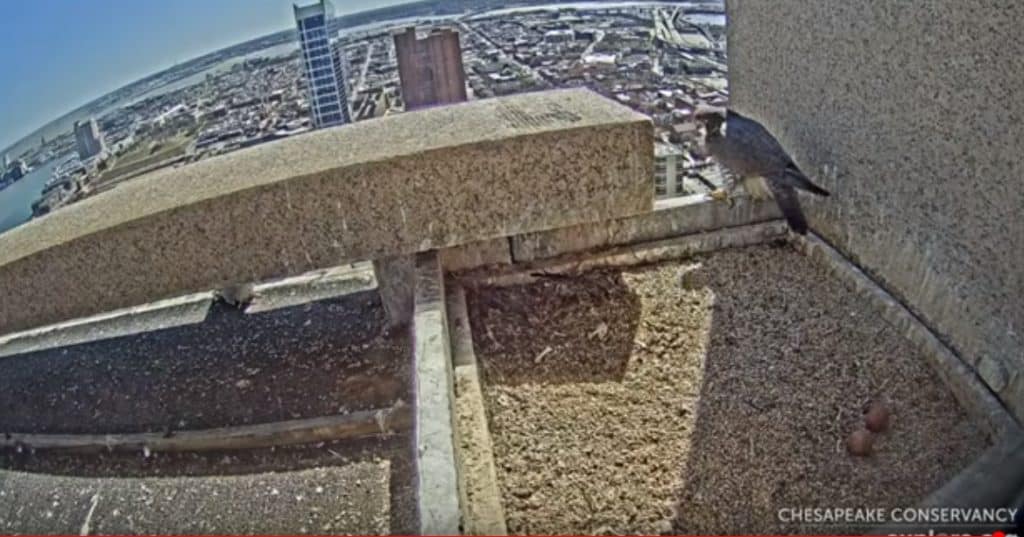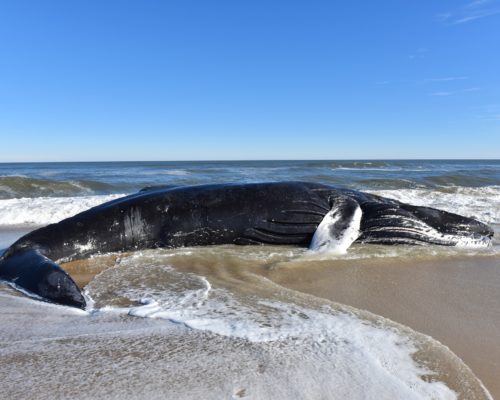High atop the Transamerica building on the 33rd floor, Baltimore’s most popular bird couple is expecting.
Peregrine falcons Boh (named for Natty Boh beer) and Barb (named after former Senator Barbara Mikulski), have nested at the same spot for years, and this week Barb just laid her first three eggs of the season. How do we know? There is a camera mounted way up there on the skyscraper, and since 2015, Chesapeake Conservancy has been operating a live stream for nature fans to watch the falcon family nest 24/7, now in partnership with explore.org.
Barb laid the first egg on Wednesday, the first day of spring, the second egg on Friday, and the third Monday morning. Peregrine falcons usually lay two to five eggs in a season. Now, the couple will spend the next 29-35 days keeping their eggs safe, with Barb doing most of the egg-sitting, and Boh bringing her food.
The video below captures Barb laying egg number two:
Once the chicks come, they’ll spend 35-45 days safe in the nest, counting on their parents to feed them. Peregrine falcons eat medium-sized birds like ducks and pigeons, catching them in mid-air. They’re thought to be the fastest bird in the world, diving from great heights to catch prey. A peregrine has been clocked at 238 miles per hour during one of these dives.
Peregrine falcons mate for life, and Boh and Barb return to the same nesting spot each year to raise their chicks. In fact, Boh and Barb’s ancestor, a falcon nicknamed Scarlett, was the first to make her one on the 33rd floor of the skyscraper back in 1977. Some may remember it being called the USF&G Building. The same falcon family has made its home at the spot for more than 40 years.
At last check, the YouTube live feed had 56,000 subscribers. In all, the three Bay wildlife live cameras managed by Chesapeake Conservancy and explore.org have received more than ten million views, with fans as far away as Iceland, Ghana and Armenia. The other live feed subjects include a great blue heron rookery and an osprey nest.
To watch Boh and Barb and their eggs live, and to learn more about the program, click here.
-Meg Walburn Viviano




